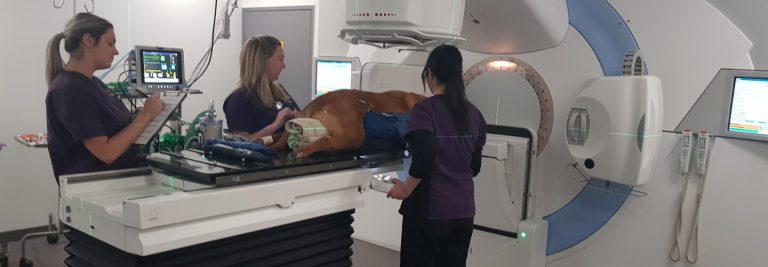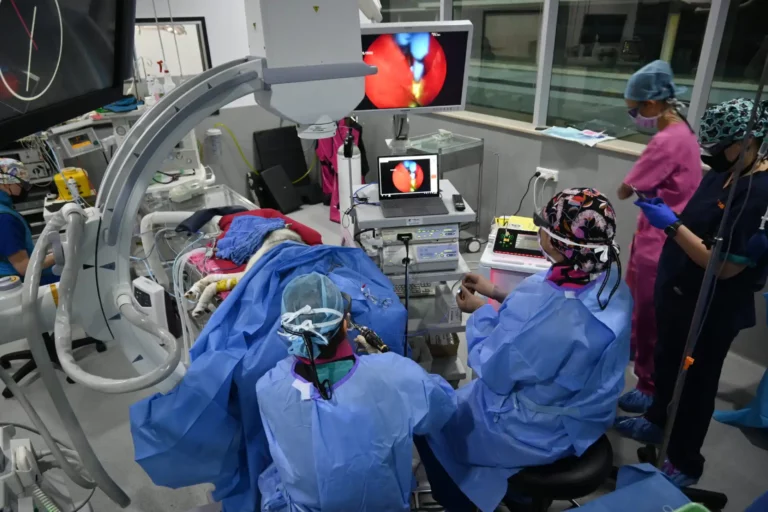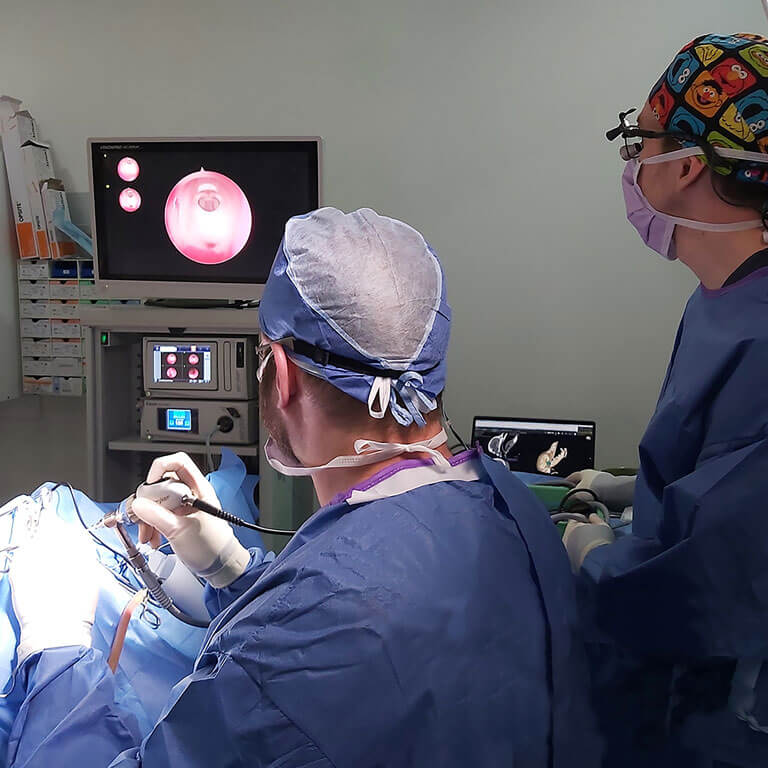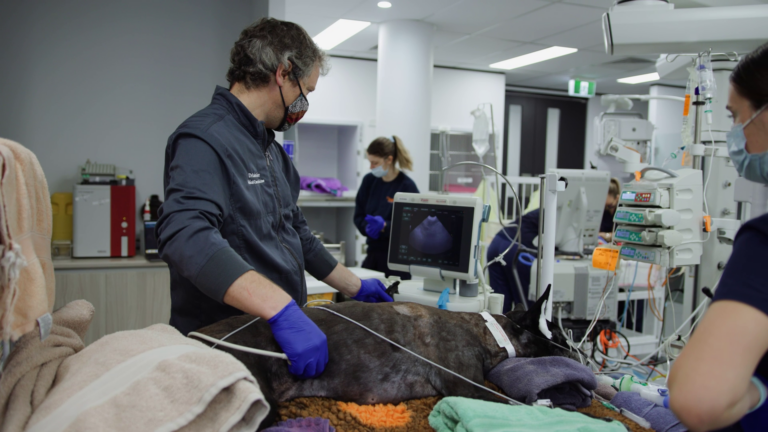By Dr Lisa Smart (Specialist in Emergency & Critical Care)
What is anaphylaxis in dogs?
Anaphylaxis in dogs is an immediate and severe allergic reaction triggered by a foreign substance. It is caused by the immune system over-reacting to the presence of certain compounds, which it tries to defend against. Anaphylaxis can negatively impact multiple organ systems including the cardiovascular system, the respiratory system, the digestive system, and the skin.
Causes of anaphylaxis in dogs
Several allergies can cause anaphylaxis in dogs. An Australian study showed that almost 50% of cases presented to a veterinary hospital resulted from insect stings, 4% were drug side effects, while the other 46% have unknown causes.
Ants, wasps, and bees have venom that contain toxins and compounds that can cause allergic reactions in some dogs. There may also be other chemicals in insect venom that can stimulate the immune system or cause tissue damage.
What dogs are more likely to suffer from anaphylaxis?
Dogs of any age can suffer from anaphylaxis. It was once thought that puppies are more sensitive to anaphylactic reactions. However, this is not the case. As it turns out, puppies present to emergency more often than adult dogs because they are more playful and inquisitive, putting themselves in contact with insects more often.
Dogs may have an anaphylactic relation later in life, and anecdotally, subsequent reactions may be worse than previous reactions. However, some dogs may have one reaction, and then never experience it again in their life time.
There is some evidence that Dachshunds seem particularly susceptible to anaphylaxis from insect stings.
Symptoms of anaphylaxis in dogs
Anaphylaxis is diagnosed when two or more organ systems are affected. Although symptoms can affect the cardiovascular, respiratory, and digestive systems, the most easily recognised symptoms are those relating to the skin.
Examples of symptoms of anaphylaxis in dogs include:
- Vomiting
- Diarrhoea
- Unsteady or wobbly walking
- Shaking or convulsions
- Swelling of the face
- Rashes or welts on the skin
- Difficulty breathing
Around 75% of dogs will have some sort of reaction on their skin, 76% will have digestive distress, and 69% will have problems with blood circulation (also known as shock). Some vets across the country believe that different regions of the country may have dogs presenting for anaphylaxis more often and more severely. Perth has been identified as a region of interest, which may have unusually vicious bees.
What do you in the case of anaphylaxis in dogs
Anaphylaxis in dogs is an emergency. Symptoms can occur very quickly and severely, so rapid veterinary treatment is important, especially if you suspect your dog is in shock or it is having trouble breathing.
If the reaction is caused by insect sting, remove the stinger with tweezers, place the stinger into a container, and bring it with you to the vet. This is important for identification of the insect.
Do not self-medicate, as this can cause additional stress on the body and delaying a trip to the vet. Flat faced dogs, such as bulldogs, need to be kept calm and cool while travelling. They are at higher risk of breathing difficulties and over-heating. Turn on the air conditioning in your car while driving.
Although some veterinarians may prescribe an epi-pen for use by owners during a future anaphylaxis episode, there is currently not enough evidence to support or discourage their use.
Treating anaphylaxis in dogs
Once with a vet, a dog suffering from anaphylaxis may receive a number of treatments depending on the cause and severity of the condition. The primary objective of treatment is to assist with breathing and stabilise the pet to minimise shock. Antihistamine injections may be administered, and depending on severity, the dog may be placed on a drip for fluids or adrenaline.
Outcomes for anaphylaxis in dogs
Positively, 58% of dogs go home on the same day of vet assessment. For those that are hospitalised, 88% go home within 12 hours.
Outcomes are generally very positive, if managed correctly, with a mortality rate of only 0.5%. Death generally occurs from owner elected euthanasia in situations where the dog experiences very severe complications that may need expensive treatment. For this reason, SASH advocates for owners to research pet insurance.
After discharge from hospital, dogs are likely to make a full recovery with the help from your local veterinarians. Depending on the severity of the case, the dog may benefit from management from a dog dermatologist to receive immunotherapy to reduce the severity of symptoms if the dog is exposed to the allergen again.
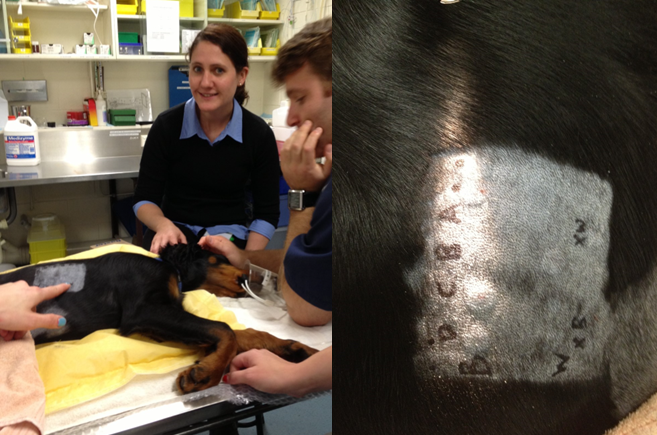
How to prevent anaphylaxis in dogs
Unfortunately, there are limited things owners can do to predict or prevent anaphylaxis. Owners may be able to clear their backyards of insect drawing plants and ensure their dogs are kept leads while on walks.
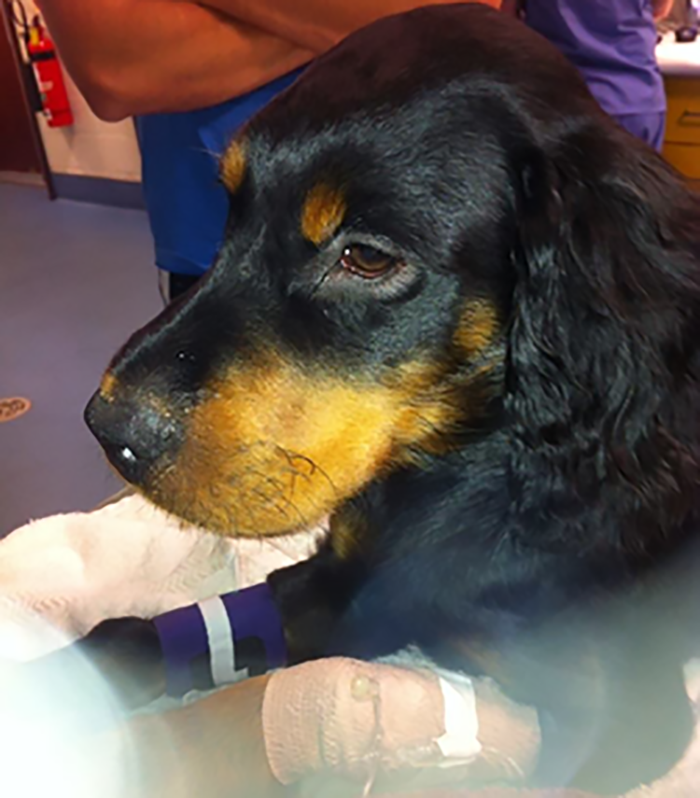
SASH Emergency for Anaphylaxis
SASH Emergency is well equipped to treat anaphylaxis in dogs and other species. Its Emergency Vets and Nurses are experienced in anaphylaxis treatment, and are supported by Specialists in Critical Care who are specifically trained to deal with patients experiencing life-threatening conditions. Our Emergency facilities are equipped with all necessary medications and ventilators, as well as being some of the few that also have support from in-house Dermatology services, which can be important for patients recovering from anaphylaxis.
This article was originally published in the Australian Dog Lover.
